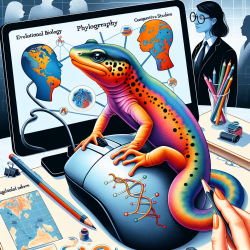The field of education is ever-evolving, and as educators, it’s crucial to adapt and integrate innovative strategies that can enhance learning and development. One such area ripe for exploration is the application of harm reduction strategies from public health into educational settings. Drawing inspiration from the research article "A harm reduction paradox: Comparing China's policies on needle and syringe exchange and methadone maintenance," educators can gain valuable insights into implementing effective interventions that promote safety and well-being.
Understanding Harm Reduction in Public Health
The research highlights two key harm reduction strategies employed in China: Methadone Maintenance Treatment (MMT) and Needle and Syringe Exchange Programs (NSEP). These initiatives aim to reduce the risks associated with drug use, particularly in preventing the spread of HIV among injection drug users. While MMT has received broad institutional support due to its alignment with both public health and drug control goals, NSEP faces challenges due to perceived condonation of illicit drug use.
Lessons for Educators
Educators can draw parallels between these public health strategies and educational interventions. Just as MMT and NSEP aim to reduce harm while promoting health, educators can implement strategies that mitigate risks while fostering a safe learning environment. Here are some practical steps:
- Integrate Comprehensive Health Education: Develop curricula that address not only academic skills but also life skills, including decision-making, emotional regulation, and health literacy.
- Create Supportive Environments: Foster an inclusive atmosphere where students feel safe to express themselves and seek help without fear of judgment or punishment.
- Collaborate Across Sectors: Work with healthcare professionals, social workers, and community organizations to provide holistic support to students facing challenges.
- Advocate for Policy Change: Engage with policymakers to promote educational policies that prioritize student well-being and integrate harm reduction principles.
The Role of Research in Driving Change
The research underscores the importance of evidence-based practices in shaping effective interventions. For educators, this means staying informed about the latest research findings and being open to adapting new methods that have proven successful in other fields. By fostering a culture of continuous learning and reflection, educators can ensure that their practices remain relevant and impactful.
A Call to Action for Educators
This research offers a compelling case for the integration of harm reduction principles into education. Educators are encouraged to explore further research on this topic and consider how these insights can be applied within their own contexts. By doing so, they can contribute to creating safer, more supportive learning environments that empower students to thrive.










